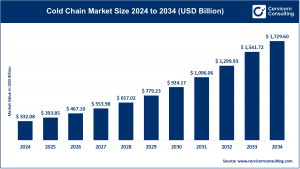Market Overview
The global advanced driver assistance systems (ADAS) market was valued at around USD 41.82 billion in 2024 and is expected to surpass USD 138.19 billion by 2034, growing at a CAGR of 12.69% during 2025–2034. ADAS includes technologies such as adaptive cruise control, lane departure warning, automatic emergency braking, and blind-spot detection, which collectively enhance vehicle safety and help reduce traffic accidents. Market expansion is fueled by increasing consumer awareness, stringent safety regulations, and innovations in sensors, artificial intelligence (AI), and connected vehicle technologies.
Get a Free Sample: Cervicorn Consulting
Key Market Trends
1. Rising Consumer Awareness
Public understanding of vehicle safety systems is driving ADAS adoption beyond luxury vehicles into mainstream segments. Features such as lane-keeping assist and adaptive cruise control are now influencing car-buying decisions.
2. Expansion of Electric Vehicles (EVs)
Battery electric vehicles represented 69% of the EV ADAS segment in 2024, making ADAS integration a standard for EV platforms, enhancing both safety and driving efficiency.
3. Integration of AI and Machine Learning
AI and ML improve real-time decision-making, predictive analytics, and object recognition in ADAS, enabling vehicles to proactively avoid accidents.
4. Technological Advancements in Sensors
Enhanced LiDAR, radar, ultrasonic sensors, and camera technologies improve ADAS accuracy while lowering system costs, supporting wider deployment across different vehicle classes.
5. Regulatory Push for Vehicle Safety
Global safety regulations, such as those from NHTSA and Euro NCAP, mandate features like automatic emergency braking and lane departure warnings, accelerating ADAS adoption worldwide.
Market Drivers
-
Vehicle Safety Regulations: Mandates for ADAS integration to reduce accidents and fatalities drive market growth.
-
Rising Demand for Autonomous and Connected Vehicles: Increasing interest in Level 2 and Level 3 automation pushes manufacturers to embed ADAS.
-
Growing Road Accident Rates: With over 1.3 million road deaths annually, ADAS technologies like collision avoidance and pedestrian detection are critical.
-
Technological Advancements: Miniaturized and cost-efficient sensors allow integration across a wide range of vehicles.
-
AI & ML Integration: Improves real-time threat detection and predictive driving assistance.
Impact of Trends and Drivers
Passenger vehicles, which accounted for 72.9% of revenue in 2024, are the primary beneficiaries, though commercial vehicles are gradually incorporating ADAS solutions. Geographically, North America led the market with 33.9% share, followed by Europe at 29.8%, driven by strong regulations and high consumer awareness. Rising EV adoption is also promoting ADAS integration into battery electric vehicles.
Challenges & Opportunities
Challenges: High system costs, integration complexities, and cybersecurity risks could hinder adoption in developing regions.
Opportunities: AI-enabled ADAS, sensor cost reductions, and EV integration provide growth potential in mainstream and emerging markets.
Future Outlook
Emerging trends such as AI-powered predictive driving, deeper EV integration, and stricter safety regulations are expected to expand ADAS adoption across all vehicle segments and geographies, driving continued market growth.
For a Detailed Overview, Contact Us: Cervicorn Consulting
